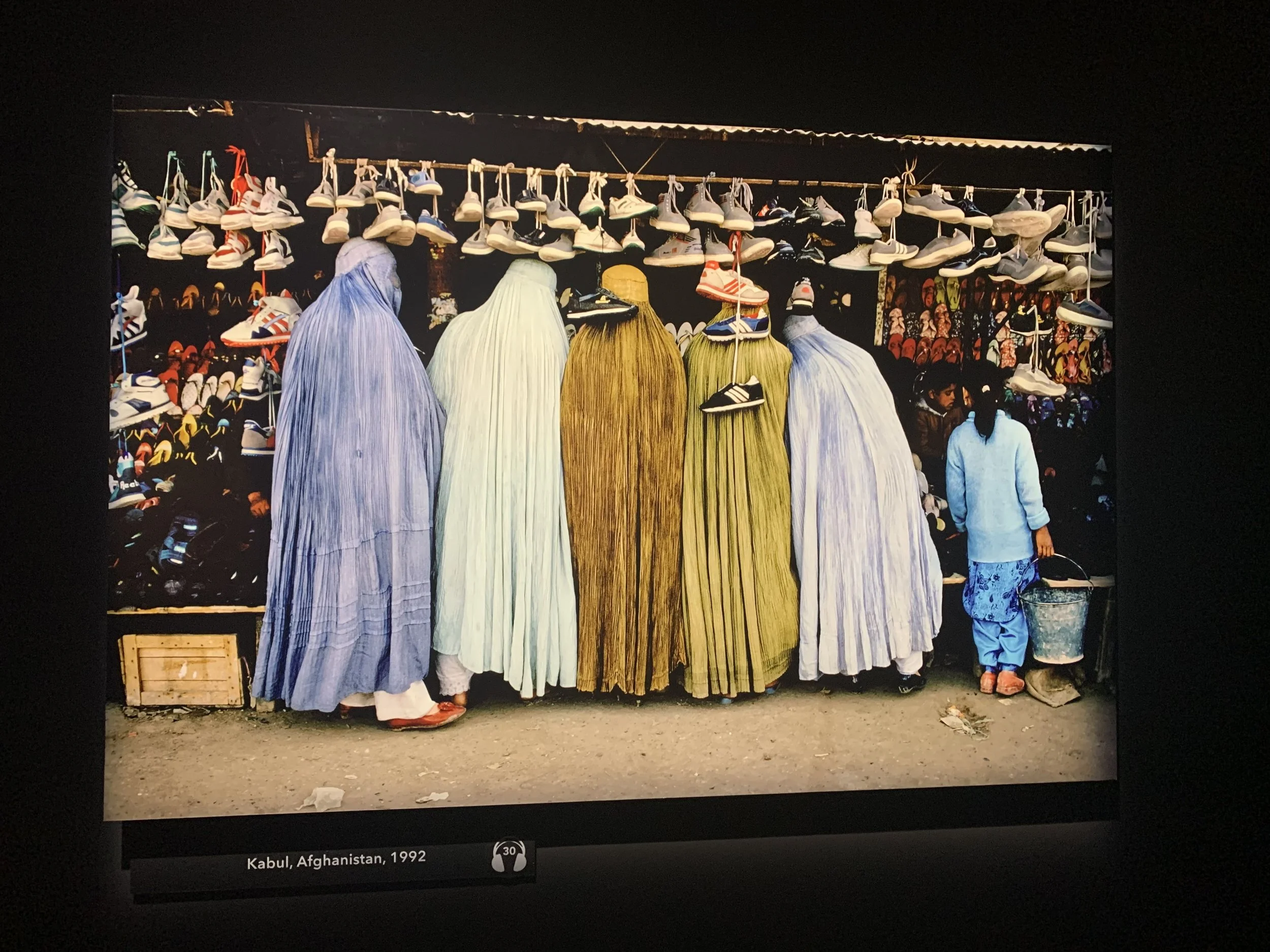Review: Steve McCurry at Musée Maillol
Article by Carolin Melz
What are the parameters of war and conflict photography exhibition? How can we tell the stories of the vulnerable, the war refugees? Their stories are conflicted between the dangers they encounter and their emotional reflection. Steve McCurry found out that images sometimes speak for themselves, and they can capture the context to which people are exposed, no comment is needed. Musee Maillol created a monographic retrospective of the most excellent photographs of the American photojournalist Steve McCurry, which is truly worth visiting.
Musee Maillol is a relatively small museum in the heart of the seventh arrondissement in Paris. The museum's architecture blends with that of its neighboring houses and is of typical french style sandstone. However, the exhibition inside brings the visitors into a seemingly different world. The curator transformed the space that ultimately brings the viewers to a sensational experience of McCurry’s images Here, the dark painted rooms, the sound of nature, the direct confrontation with the images scattered all around the rooms, free-standing on metal supports, and the immersive colors of the photographs all create a Gesamtkunstwerk.
The first room displays a series of portraits. These are probably the most impressive, as in many, the sitters' eyes directly look into the viewer. The space has an atmosphere of silence and awe. The dark room does not make the room feel dull. Instead, the most vibrant colors of the images portraying children and adults from the most foreign countries like Peru, Libya, or Tibet 1 brighten the color scheme of that space. There are barely any wall texts present. There is no wall text for the first room; it first starts for the following sections. The image captions are minimal, mainly comprising the time and year of the work.
This all leads to the photographs speaking for themselves. The images create an immersing effect through the directed light. I first thought that the images were presented on a digital platform that illuminated them since their light and color are intense. Surprisingly, these images were very printed on rigid cardboard and glued to a frame.
The following exhibition section presents children in conflict areas. These kinds of photography are already quite common for photojournalists. The sense of playfulness, life, and entertainment for children shows one of the most significant contrasts to the tragedies of war. This series shows how children can still find toys, even such as guns or bombarded cars, amidst the terrain of war.
Another series shows the relationships between animals and people in different western and non-western countries (if this taxonomy is appropriate here). It showed how animals are included in the consequences of war, even though they are not directly involved. Some animals are there, 2 seemingly giving emotional support, and we can see people lying and cuddling an elephant or a dog. Pieces like these are very emotional and make one wander for several minutes before a photograph.
The final room is a yogave through Southeast Asia, Africa, Afghanistan, Latin America following the “artist's recurring leitmotif: humanity in all its forms.” Confronted with different cultures, he created 1 Omo Valley, Ethiopia, 2012 (see: image above). Here, the exposing young females, wearing their most elaborate jewelry in the photograph are presented next to a white, blonde female doll, which showcases the two contrasting beauty ideals. The end of the exhibition presents what the visitors were mainly looking for: the Afghan Girl. It is however considerable that this famous photo is displayed at the end of the exhibition. Steve McCurry’s photography is not only constrained to this one photo. The retrospective of the most important works of McCurry amazes the audience of how much he has traveled and encountered different cultures, people of different backgrounds, and confronted difficult situations himself for the sake of art. Art that can transform people’s minds.
Overall, the exhibition is well done. The selection of the photographs is great and there is plenty to see. The audio guides are a great asset, which give an insight to the work of Steve McCurry. The English version of the audio guides records the accurate voice of Steve McCurry.
The french translation however seems to suit the calm atmosphere of the space and makes the experience calmer and more immersive. Furthermore, all the wall texts were in french without an english translation, therefore the curator must have had a french audience in mind despite the photographer's anglophone background.
Still, the exhibition shows a world that should be appreciated as a whole, the beauty of people, their hearts and their minds contrasting with all misery and hate in the world.




